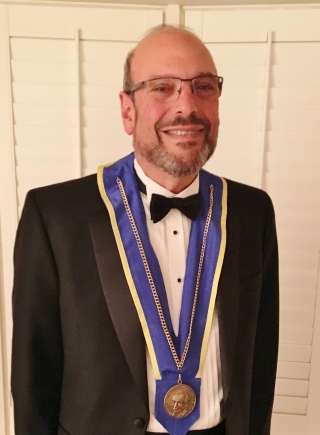
Seafood Sustainability Part One: The Beginning
01 February 2023A tri-colored scorecard began informing consumers about a seafood menu item’s abundance and harvesting methods – which caught on.
By Adam Weiner, JD, CFSE, and Stephanie Weiner, BA
Feedback & comments: This email address is being protected from spambots. You need JavaScript enabled to view it.
It seldom happens that a person can look back at a food trend and know when and where it started. There are some exceptions. We know Paul Prudhomme created the blackened fish trend in March 1980 at his New Orleans restaurant. We know Julia Child started the first movement of television cooking shows in 1963. We know the original Iron Chef started rocking the world by creating popular chefs on October 10, 1993. However, most of the time, it’s a mystery where and when the food trend was created. Don’t believe us? Look up who, when and where the hamburger was created. Do this for pizza and tacos too.
The beginning of the global movement toward seafood sustainability is known; it is undisputed when, where and how it started and spread. What makes it more fun for both authors of this article; we were there and participated from the beginning.
In the early 1990s, scientists and environmentalists became concerned that overfishing wiped out various fishing grounds and species globally. Areas that previously had plenty of fish types were becoming depleted. However, the word was just not getting out. The Marine Stewardship Council started a certification program in 1996, but it wasn’t taking hold. In 1997 the Monterey Bay Aquarium created a hands-on exhibit where people walked into what looked like a diner, sat down and ordered from a menu. As they would order a selection, they were informed that they had made a red, yellow or green choice:
- Green/best choice meant the item was an abundant species and caught in environmentally friendly ways
- Yellow/good alternative meant there were some concerns with the species’ status or catching methods
- Red/a seafood to be avoided meant the choice was to be avoided because of its low numbers and/or the way it was caught
Stephanie and I were invited to a soft opening of the exhibit and thus were one of the first to play the game.
This exhibit became popular and in 1999 the Monterey Bay Aquarium created Seafood Watch. The purpose was to educate people– no matter if they visited the Aquarium– about seafood sustainability. The idea was to help people make informed decisions on what seafood to order in restaurants or buy at stores and fish markets. The Aquarium published small cards that could be folded into a purse or wallet and distributed them to everyone. When the Internet became more user friendly, the guide went online and then viral. Now there are many websites, aquariums, non-profit and government agencies publishing the same information. Many sites continue to use the green, red and yellow scale as well.
The first industry people to feel the Seafood Watch’s effect were restaurants on the Monterey Bay Peninsula. Stephanie and I have known many owners and chefs through the years who told us stories about seafood sustainability’s early days when people came for dinner after visiting the Aquarium, looked at the menu, and then pulled the cards from their pockets, wallets and purses. These restaurateurs told us they were shocked that people –for the first time– asked where their dinner was caught and if it was caught in an environmentally friendly way.
Chefs and owners across the United States were very reticent. They chalked the movement up to California being, well, California. But soon people across the country asked fishmongers and waiters where the fish was from, whether it was line caught or net caught, and if it was farmed or wild? Foodservice people were caught off guard and most couldn’t answer the questions.
What was even more amazing was that the people asking the questions grew up on canned tuna, frozen fish sticks, and fish sandwiches at fast food restaurants. (I recall taking a class field trip when I was in elementary school to a tuna fish packing plant in San Pedro, Calif., where I was given a tuna can as a souvenir.) At that time, no one disclosed how fish were caught or where they were from.
The movement grew and seafood sustainability is a driving force in consumers’ seafood purchasing. You don’t have to look hard to find seafood markets, or restaurant menus, identifying where the fish is from, if it was line or net caught, and if it was fresh or farmed.
Next month, Stephanie and I will address the second part of seafood sustainability: What’s all the fuss and what comes next?
Adam Weiner, JD, CFSE, has been a culinary instructor in the San Francisco Bay Area for more than 17 years.
